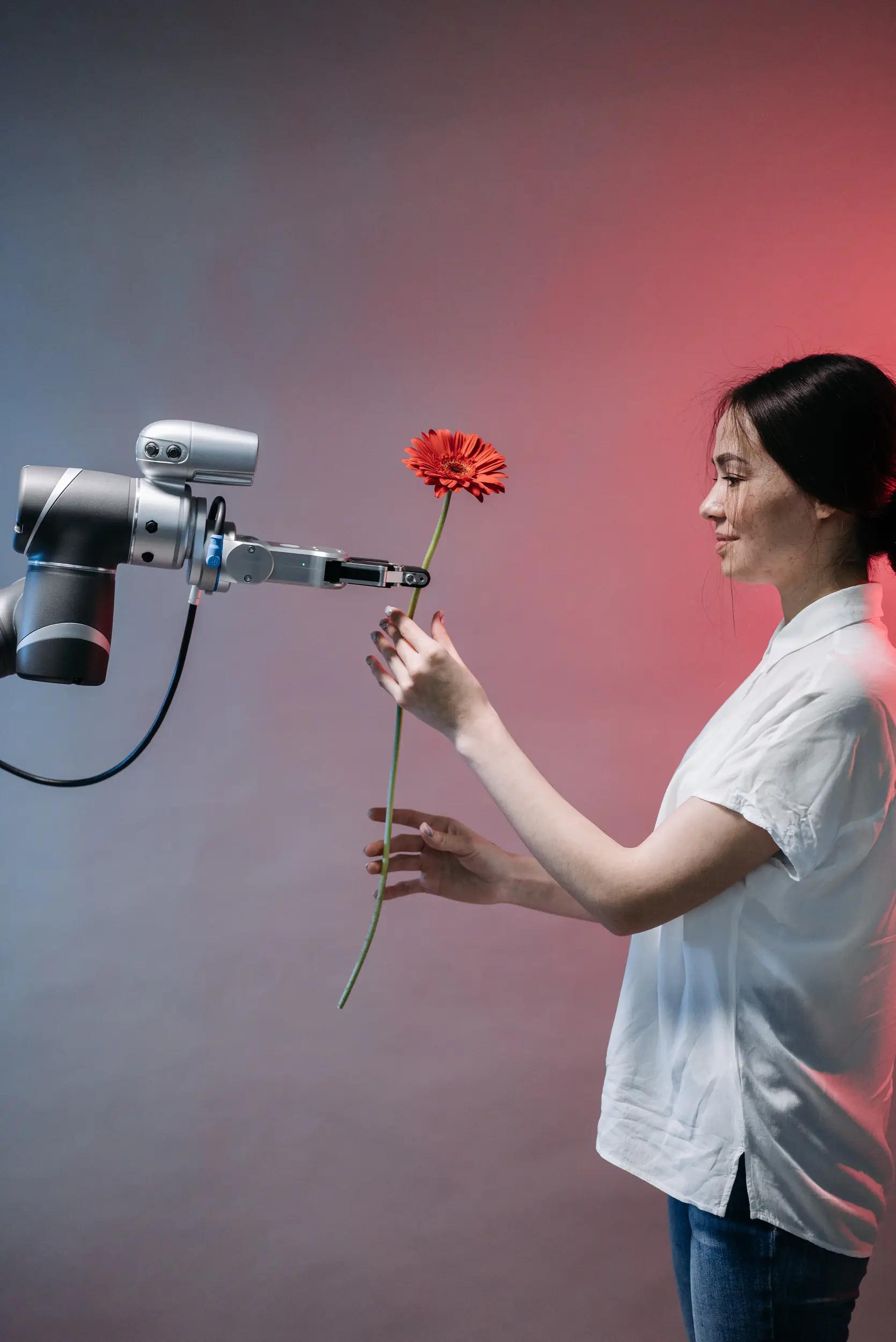Skills
Web 4.0: a "virtual" outlook for new skills
11th October 2023

It is still a vision. No one knows for how long. But it seems certain that it will come. Web 4.0, also known as the symbiotic web or the smart web. Because one of the main differences in the new evolutionary stage of the internet lies precisely in the "smart" symbiotic interaction between man and machine. Whereas in its predecessors, Web 1.0 and 2.0 as well as 3.0, there was still a clear boundary between the real and the virtual world, Web 4.0 will make this boundary disappear... fluidly.
Evolutionary stages of the Internet & designations*:
Web 1.0 = Static Web (1997 - 2000)
Characteristics: static pages and contentWeb 2.0 = Social Web (2000 - 2009)
Characteristics: human-centered, collaborative development, social networksWeb 3.0 = mobile web, semantic web, intelligent web (2010 to 2020)
Characteristics: descriptive stage, linking resources semanticallyWeb 4.0 = symbiotic web, smart web, web of goals, pervasive web, WebOS (2020 to xxx)
Characteristics: goal-oriented intelligent linking of semantic resources, symbiotic human-machine interaction.
*Selection of common terms; temporal boundaries are fluid and vary greatly depending on the source.
How is the Internet changing? How is the Internet changing us humans? What comes after social media? Will augmented reality become mainstream and will we soon all have a digital identity, a virtual alter ego?
These and similar questions revolve around the next evolutionary stage of the internet. So far, all that is clear is that we are in for a lot of very fundamental and very all-encompassing change, and that it will come exponentially fast. But exactly where we will be in the next ten years is anyone's guess.
What is Web 4.0?
Has it already begun, or are we on the verge of upheaval? The answers to this question vary. However, many agree that the term "Web 4.0" is a collective term used to describe future aspects of the World Wide Web (WWW) and its use that are expected in business, society and science. The term thus stands for the near future of the internet and its applications. A fixed definition does not yet exist.
The EU understands Web 4.0 to mean:
"Digital and real objects and environments that are fully integrated and communicate with each other, enabling immersive experiences."
Science understands Web 4.0 to include:
"The WebOS will exist in parallel with the human brain, implying a massive network of highly intelligent interaction."
Even in the case of Web 3.0, attempts to define it vary widely. Tim Berners Lee, inventor of the World Wide Web, referred to it as the "semantic Web," focusing on the sheer abundance of available data. Data as the new gold. Step by step, this development is being replaced or supplemented by artificial intelligence (AI). AI is already part of everyday life in many areas of our lives. Auto-correction, smart home devices, digital voice assistants, facial recognition: these are all examples of programs and skill applications based on algorithms whose goal is to emulate human intelligence as closely as possible through machine learning processes.
Web 4.0 is predicted to take this connection between computers and minds to a new level. The idea is that humans and machines will be able to interact symbiotically.
What does our digital future look like?
Okay. Admittedly. Everything that comes next is a look into the crystal ball - albeit with a scientific background. While no one can yet predict exactly how the new generation of virtuality will change our lives, the predictions resemble each other. We summarize the main predictions as an overview.
One vision is that technology from the internet will become part of our reality. With this, everyone could have personal assistants in the form of artificial intelligence that has skills to gear to individual needs and provides needed information. This technological change will bring a seamlessly connected, intelligent and pervasive world.
Features of Web 4.0
The user is increasingly merging with the internet. The boundary between man and machine is fluid.
Different devices, computers and machines interact with each other (IoT - Internet of Things), exchange data and "act" autonomously.
Augmented reality is standard for everyone. Keyword: digital assistants.
The internet is a WebOS. Information can be transmitted from any part of the world.
The internet is transparent; all actions are traceable.
Every person can have a digital alter ego.
If these forecasts come true, the future of the internet holds extreme economic potential. It is estimated that the global market volume of the virtual world will rise from EUR 27 billion in 2022 to over EUR 800 billion by 2030.
Good or bad future?
The internet is not good per se. Nor is it bad. Neither is it just or unjust. This categorization only comes about through human intervention. After all, new technologies and skills are constantly emerging, influencing the development of all of us around the world. This opens up countless new possibilities. For those who have access to these technologies are privileged - and have significantly greater opportunities for education and work and prosperity. But those who do not have access to the internet are excluded. Incidentally, this affects around half of the world's population. Not everything is rosy in Germany either. After all, those who don't have fast access - like companies in rural areas - are always behind the competition. Is that fair? Certainly not. What's more, whoever has the knowledge of the technology with its algorithms has power. The "powers" that currently rule virtually are based in Silicon Valley. They are companies like Google and Amazon. Thus, at the latest with Web 3.0, it is clear to everyone that the internet promotes turbo-capitalism. Is that fair? Certainly not.
The key to participating in the digital world with all its infinite possibilities and opportunities lies in knowledge about the technology. This is what makes users into responsible decision-makers and skill users.
The key resource "IT education" is therefore also a central aspect of the EU Commission's current strategy paper on Web 4.0. This serves the goal of steering technological change and ensuring an open, secure and inclusive digital environment.
Opportunities for women
The EU expects massive changes for our human coexistence through the next evolutionary stage of the internet. These changes bring many opportunities, such as benefits for health, the green transition or the predictability of natural disasters. However, there are also a multitude of potential risks, such as further growing social and economic injustice or the expropriation of sensitive data. That is why one of the first - and probably most important - pillars of the EU strategy paper is to strengthen people's maturity and skills. Or in other words: Learn IT!
Especially IT specialists play a crucial role in future developments. Therefore, the EU plans to create a talent pipeline together with the member states and to financially support skill development - specifically for women and girls.
There is still a digital gender gap, i.e., gender-specific differences in the context of digitization. Every woman can decide for herself how much longer. The time has never been better to invest in IT knowledge NOW. Because new technological developments mean that there are numerous teaching opportunities and further training courses that take place digitally. This means that every woman can obtain an IT degree from anywhere - and even part-time. Through flexible working hours and remote work, the ongoing digitization in the world of work offers opportunities for women in particular to pursue higher-skilled and well-paid full- or part-time positions. Digitization - and Web 4.0 - can improve career opportunities and economic independence for women. The condition? Being digitally up to date!
Our digital "update" specifically for women is available here.

What are you waiting for?
Apply today! Our Student Admissions team is happy to speak with you and answer any unanswered questions.